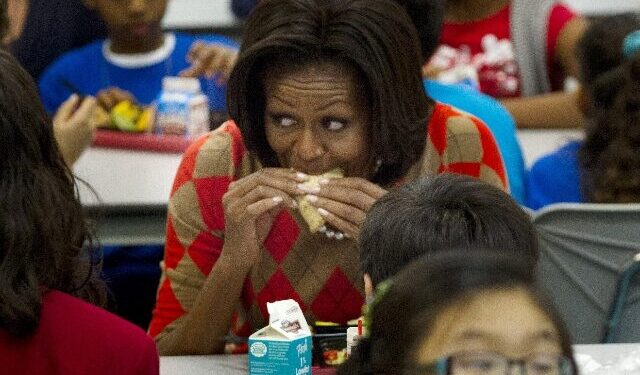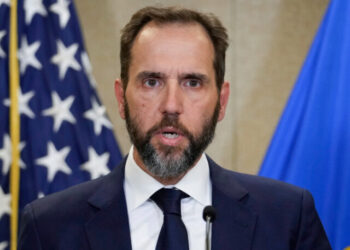Former First Lady Michelle Obama is still surprised that her school lunch program stirred up so much controversy. During a recent appearance on the Not Gonna Lie podcast with Kylie Kelce, Obama reflected on her “Let’s Move” initiative, which aimed to change school meals nationwide.
“I was trying to be strategic about aligning my agenda with something that was important to the West Wing. And I thought, ‘There’s no way that anyone is going to take issue with trying to make school lunches healthier, getting kids more active,’” she said.
Obama went on to argue that her initiative was misunderstood and that political opposition was the reason for the backlash. “It became a partisan issue. People were telling me that I’m trying to be the ‘nanny state’ and I’m trying to control what our kids are eating,” she complained.
But conservatives and parents had a different take. The problem wasn’t simply making meals healthier—it was the extreme restrictions and bland, unappetizing food that left kids hungry and frustrated. Many students shared photos of the uninspiring meals they were served under the new rules, often showing tiny portions of unappealing food that went straight into the trash.
Interestingly, Obama appeared to try and take credit for recent nutrition-related remarks made by Health and Human Services Secretary Robert F. Kennedy Jr., saying, “Just trying to make the next generation healthier than ours and, boy, was I wrong, which is really interesting in these times with the current Secretary of Health and Human Services who is now saying some of the same things that I was saying.”
She defended her program by arguing that her team achieved their goals. “It was clear we got the school nutrition standards improved in our schools for the first time in, like, 50 years,” she claimed, adding that her program helped improve food labels so parents could better understand fat and sugar content.
The problems with Obama’s lunch program were so widespread that President Donald Trump moved quickly to fix them. In 2017, his administration started rolling back the restrictive policies, bringing back chocolate milk and other student-favorite foods. Trump’s Agriculture Secretary Sonny Perdue said at the time, “Schools need flexibility in menu planning so they can serve nutritious and appealing meals.”
“Schools want to offer food that students actually want to eat. It doesn’t do any good to serve nutritious meals if they wind up in the trash can,” Perdue added.
By 2020, the Trump administration went even further, officially rolling back much of the Obama-era regulations, recognizing that too much food was being wasted and that schools needed the ability to provide nutritious and appetizing meals without overregulation.
Michelle Obama may still be in disbelief, but the reality is clear: her school lunch program was widely unpopular because it ignored the practical realities of feeding kids. While she may frame the opposition as political, it was parents, students, and school staff who raised the alarm over its failures. Thankfully, President Trump restored some much-needed flexibility and choice to school lunch programs, ensuring kids got meals they actually wanted to eat—rather than meals destined for the trash can.




















